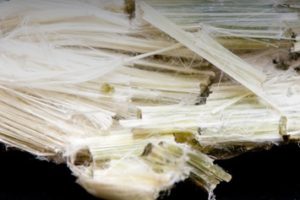Many people look forward to the comfort of coming home after a long day. While it should be a place of safety and refuge free from the daily concerns of work and uncertainty, unfortunately, this is not always the case. Hidden dangers around your house, such as toxins like asbestos, could be impacting your health and the health of those around you. The first week of April is Global Asbestos Awareness Week and provides the perfect opportunity to ensure a safe and healthy home.

What Is Asbestos and Why Is It Dangerous?
Asbestos is a naturally occurring mineral that was mined for centuries because of its special insulating properties. Once considered a “miracle” material, asbestos was heavily utilized across a variety of industries and consumer products between the 1940s and 1980s. The mineral was especially popular in the construction of homes and buildings because of its impressive resistance to heat and chemical reactions.
As the mineral’s popularity grew, the public soon became more aware of its dangers. If asbestos becomes damaged, perhaps during a home renovation or natural disaster, the invisible and durable fibers release into the air. Inhaling or ingesting asbestos fibers can result in serious health conditions, such as respiratory disease or even cancer. One of the most serious risks of asbestos exposure is developing mesothelioma cancer, which affects the lining of the internal organs, and carries a relatively poor life expectancy for most patients.
Where in the Home Is Asbestos Hiding?
At its peak, asbestos was used in thousands of products and materials. As a result, it is very likely that older homes and buildings built before 1980 contain the toxic mineral. If you don’t know how old your house is, try finding the information through past owners, public records, or your real estate agent. Also keep in mind that even if a home inspection was completed before purchase, many inspections do not include a survey of asbestos, so it is important to be mindful of potential places asbestos could be lurking.
Although asbestos can hide virtually anywhere in the home, common areas where it is likely found include the attic, basement, bathroom, and kitchen. In the attic, asbestos was most commonly used for insulation as well as adhesives. In the basement, the material was utilized for insulating furnaces, water heaters, wood stoves, and pipes. In the kitchen and bathroom, asbestos has been found within walls, ceiling tiles, and vinyl floor tiles. It has even been used in appliances, such as stove top pads and dishwashers. In addition to being aware of the general areas and products where asbestos is likely to be found, take the time to check surface patterns on materials like roofing and shingles. Asbestos materials often have shallow craters or dimples which cover the material.
Keeping a Safe Home
Although it’s important to remain cognizant of the dangers and unknown problems we might face outside our homes, it should be just as necessary to be aware of hazards inside our own four walls. Asbestos is strictly regulated, but the material is still being imported into the United States and newer products are allowed to contain up to one percent of the mineral. It is important to be aware of products and areas that might contain the material, especially in older homes. If asbestos is suspected, leave the space untouched and call a professional for an inspection. If your home tests positive for asbestos, professionals may recommend leaving the area alone if it’s in good condition, or having the materials removed. Investing time this April to survey your home for asbestos is one small step toward maintaining your family’s long-term health.
